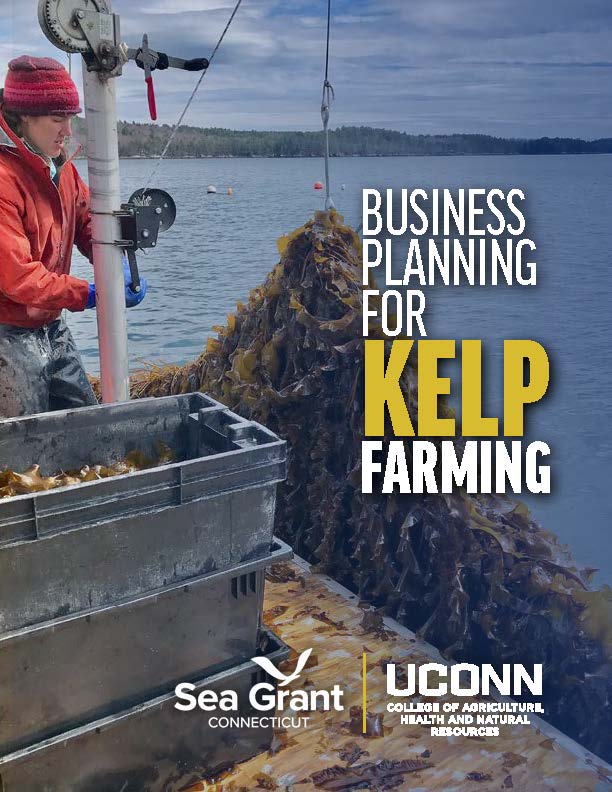
Comprehensive business guide for kelp farming now available
Business Planning for Kelp Farming, a 75-page guide and resource listing for new and prospective kelp farmers, is now available. It was created in response to a critical missing tool identified by the National Seaweed Hub Needs Assessment of 2020.
[Read More]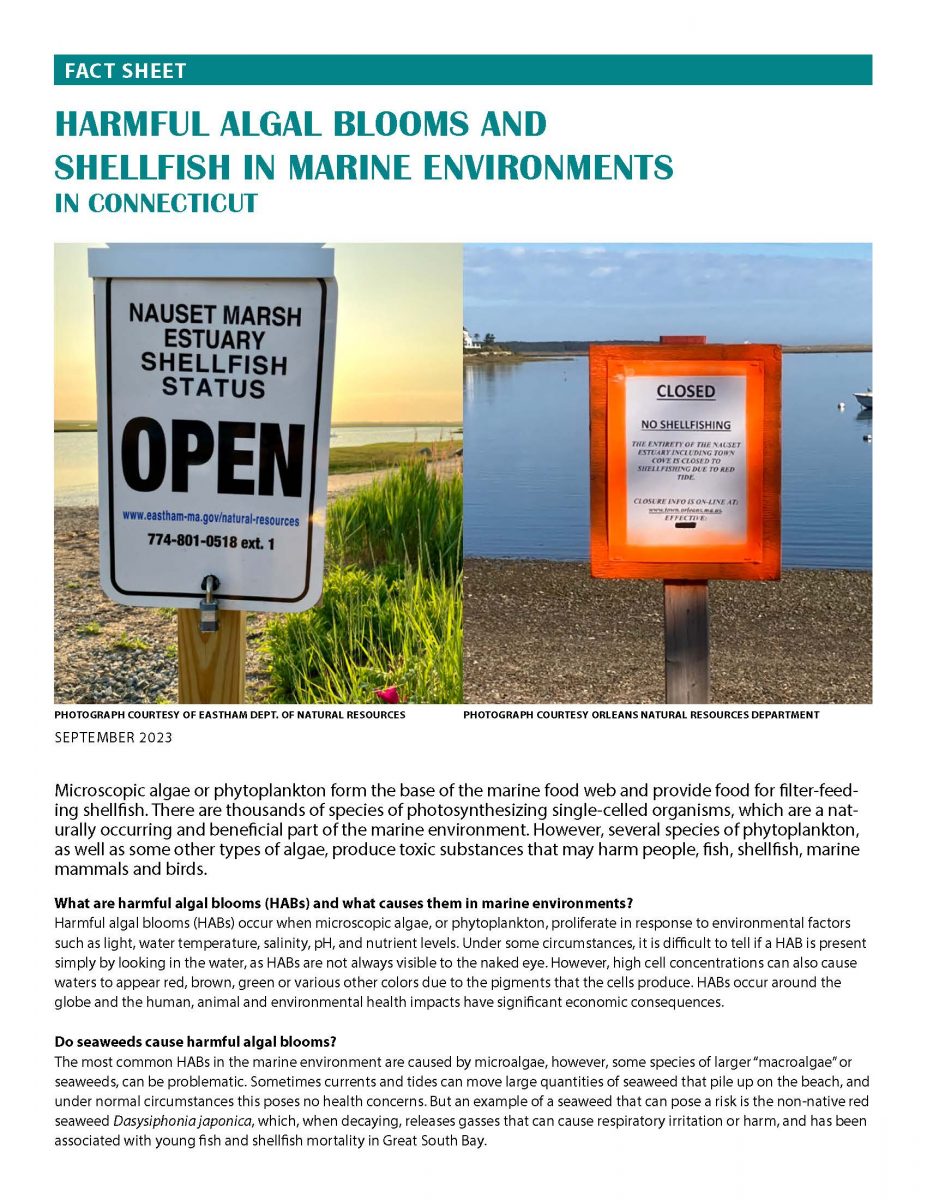
Harmful algal blooms explained in new fact sheet
Learn the basics of harmful algal blooms and how they can affect shellfish in the new fact sheet, “Harmful Algal Blooms and Shellfish in Marine Environments in Connecticut.”
[Read More]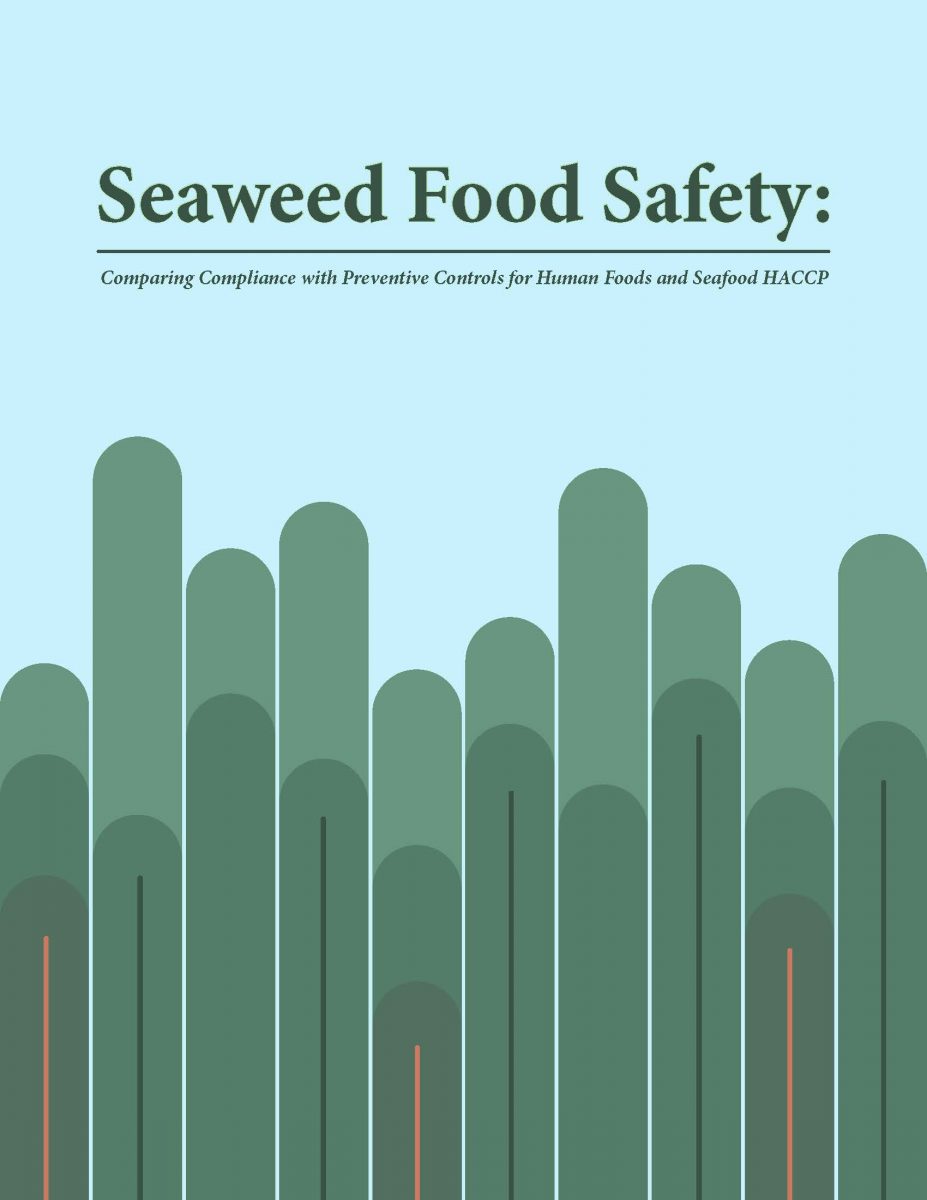
Seaweed Food Safety: Comparing Compliance with Preventive Controls for Human Food with Seafood HACCP
The National Sea Grant Law Center has announced the release of a new seaweed food safety publication produced in partnership with New York Sea Grant and Connecticut Sea Grant as part of the National Seaweed Hub.
[Read More]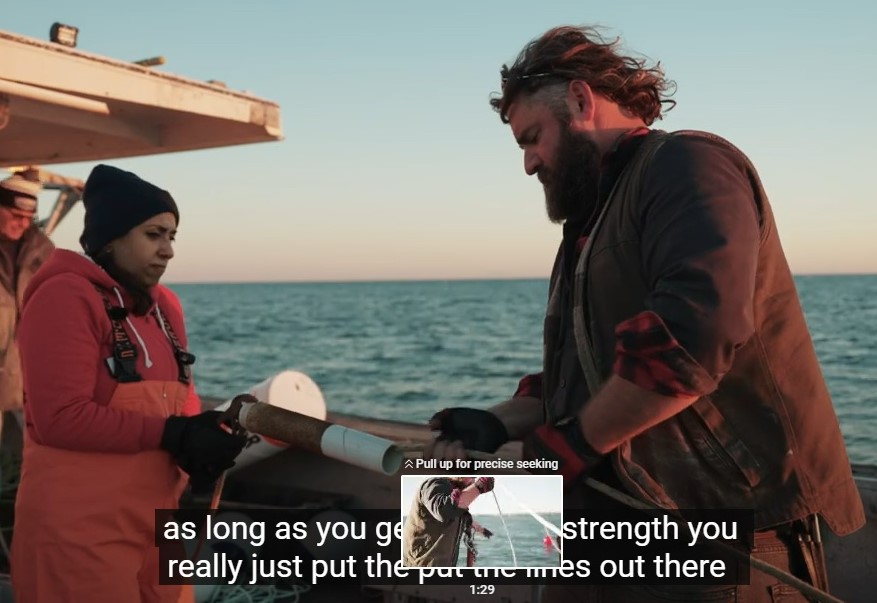
“Deploying Sugar Kelp Seed String” video
New video, “Deploying Sugar Kelp Seed String,” showing the process of planting seaweed in LIS. Kelp farmer DJ King and Anoushka Concepcion, associate extension education specializing in marine aquaculture, talk about this new and exciting crop that is edible, nutritious and environmentally friendly.
[Read More]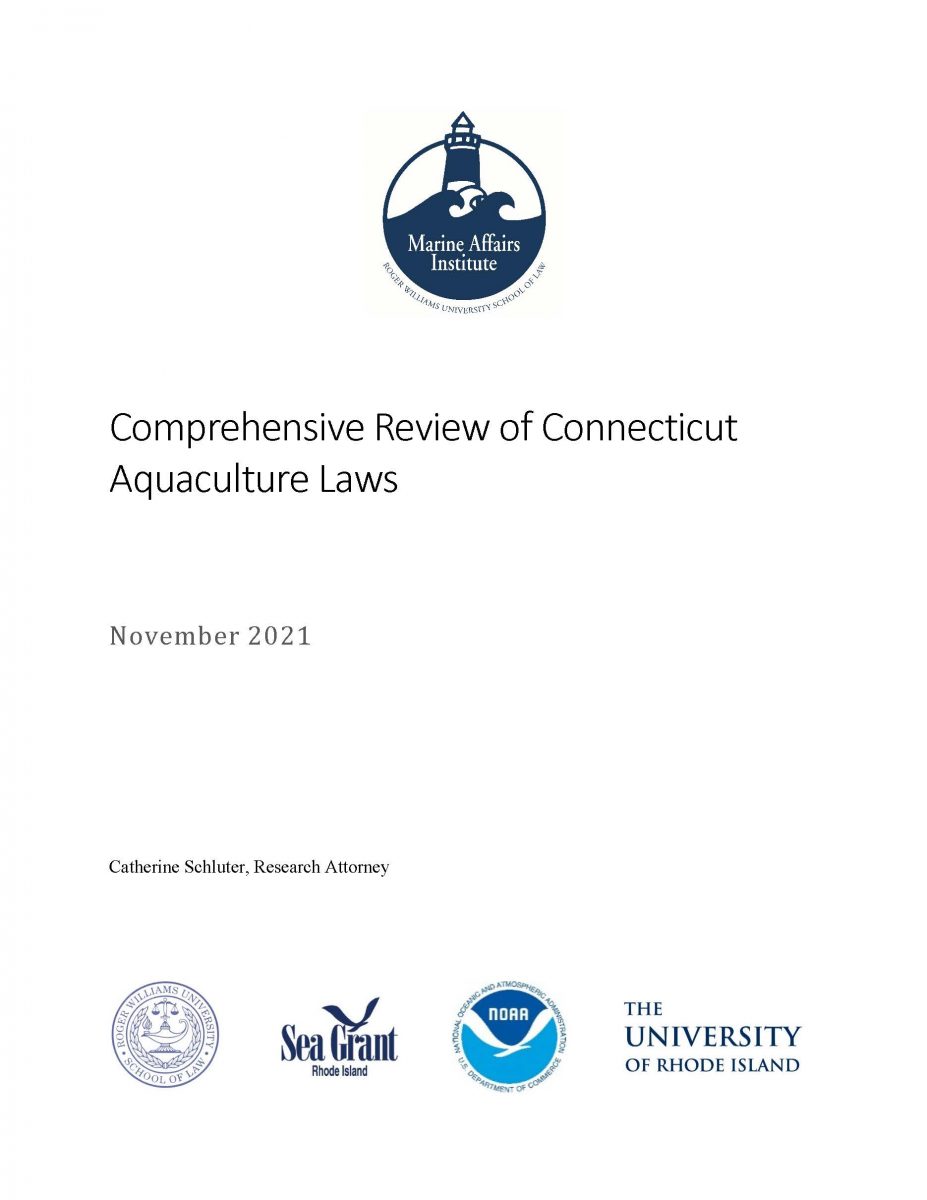
Comprehensive Review of Connecticut Aquaculture Laws
The newly published “Comprehensive Review of Connecticut Aquaculture Laws” assesses the state’s aquaculture laws, compares various aspects of Connecticut’s aquaculture laws to those of competitor states, addresses 11 major questions and suggests policy changes to strengthen regulatory systems.
[Read More]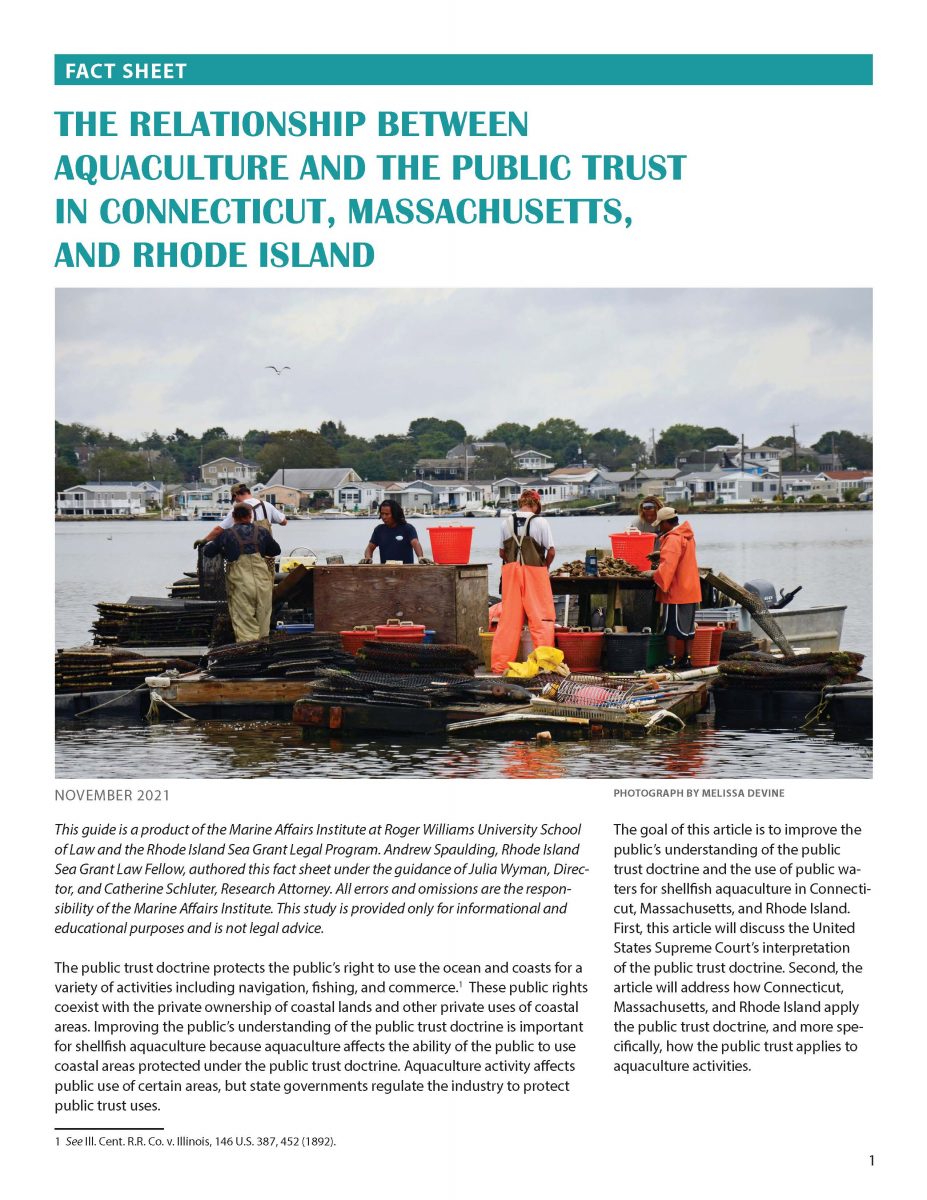
The Relationship between Aquaculture and the Public Trust in Connecticut, Massachusetts and Rhode Island
A new fact sheet, “The Relationship between Aquaculture and the Public Trust in Connecticut, Massachusetts and Rhode Island” seeks to improve understanding of the public trust doctrine and use of public waters for shellfish aquaculture in these three states.
[Read More]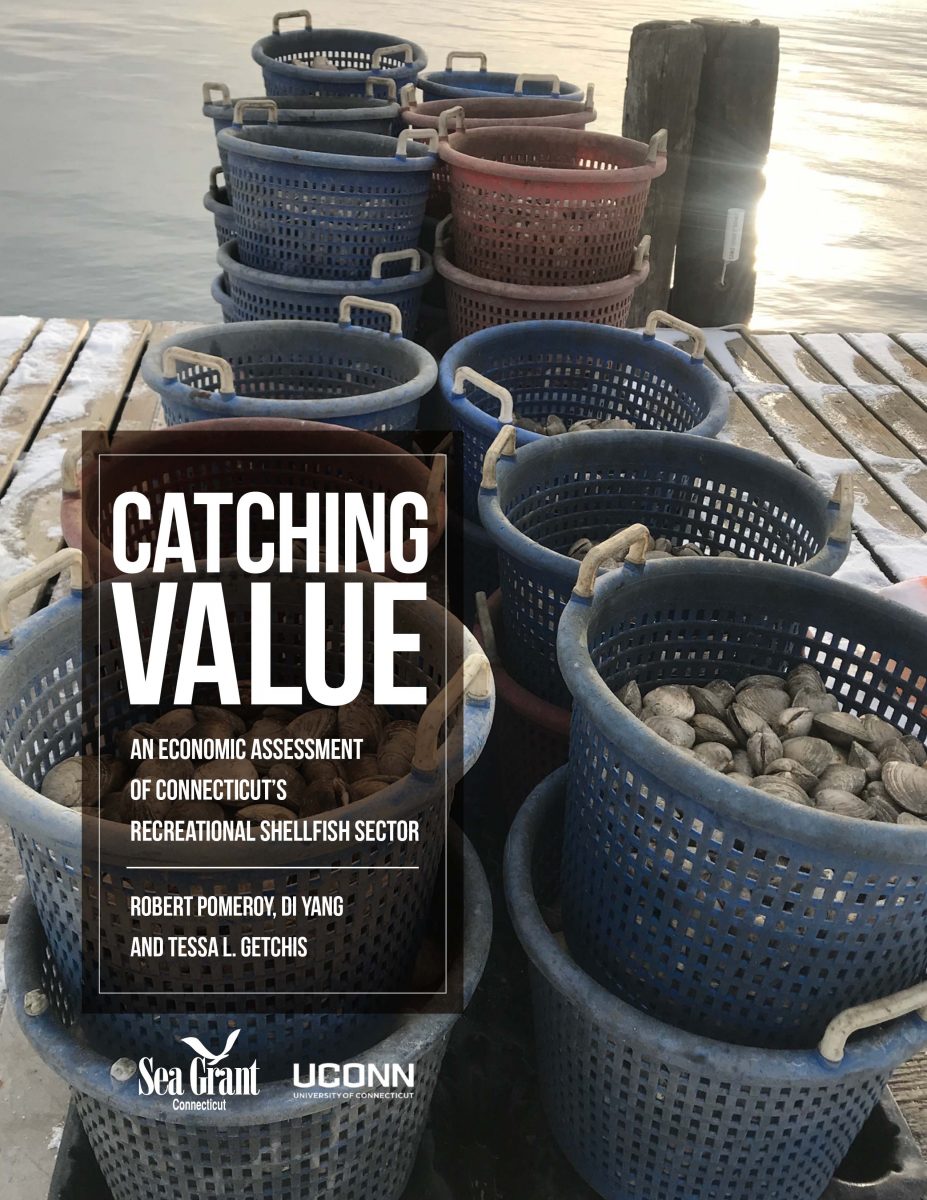
Catching Value: An Economic Assessment of Connecticut’s Recreational Shellfishing Sector
“Catching Value: An Economic Assessment of Connecticut’s Recreational Shellfishing Sector,” finds that this activity has a more than $1.6 million annual economic impact on the state’s economy.
[Read More]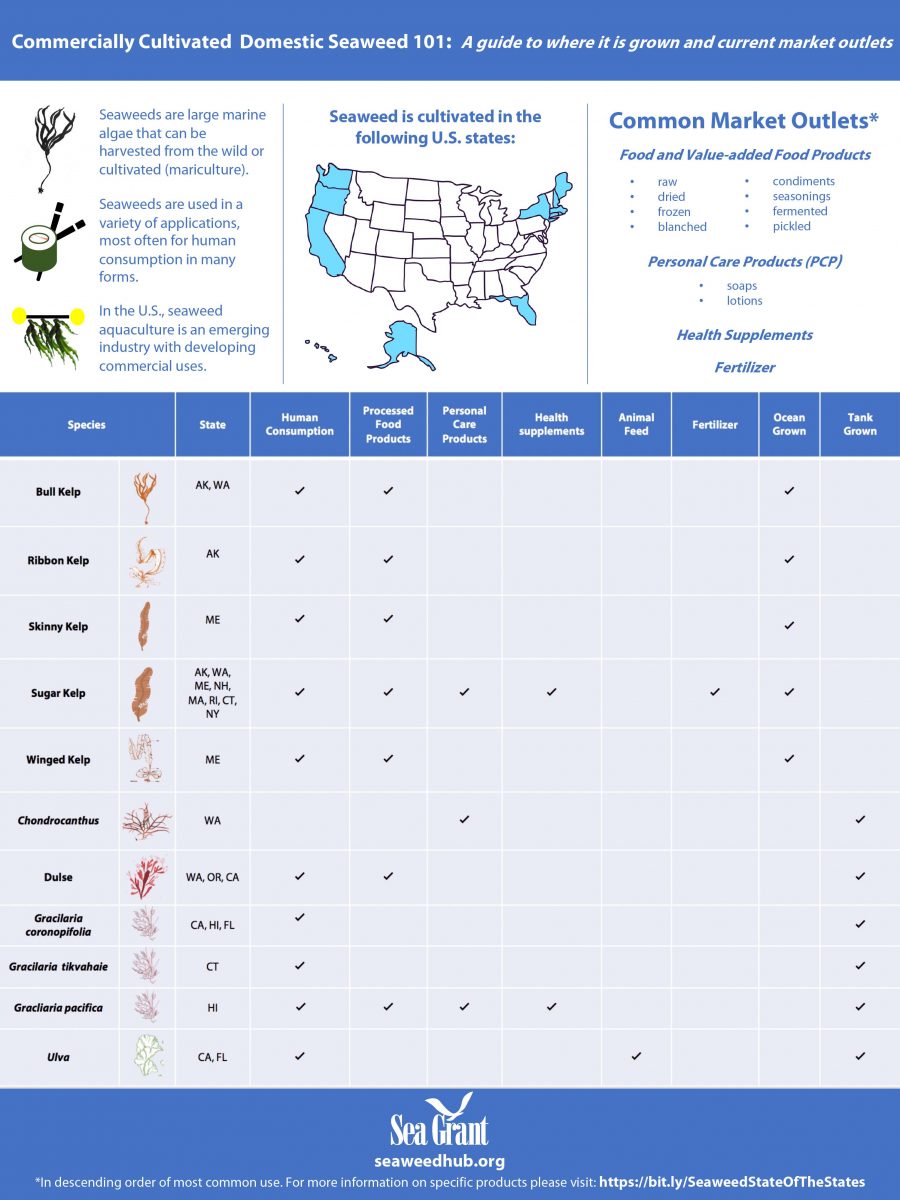
‘Domestic Seaweed 101’ infographic
The Sea Grant Seaweed Hub has released a new infographic that provides a guide to where seaweed is grown and current market outlets.
[Read More]Impacts of COVID-19 Pandemic on the Connecticut Aquaculture Industry – Preliminary Report
To better understand the impacts of the COVID-19 pandemic on the state’s aquaculture industry, the CT Sea Grant Program and the CT Department of Agriculture implemented an anonymous survey of Connecticut’s aquaculture producers.
[Read More]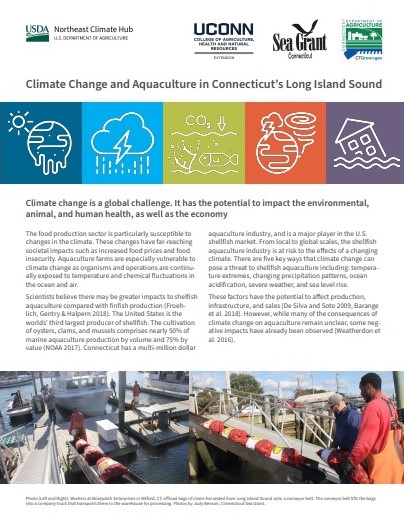
Climate Change and Aquaculture in Connecticut’s Long Island Sound
“Climate Change and Aquaculture in Connecticut’s Long Island Sound,” addresses an issue of great importance to the state’s multi-million dollar aquaculture industry.
[Read More]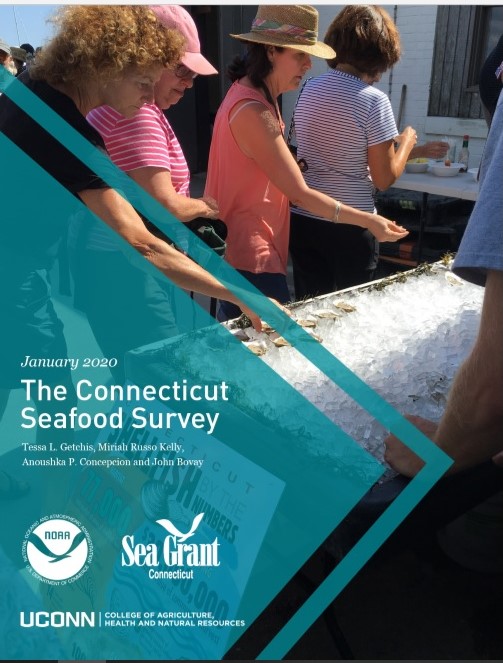
The Connecticut Seafood Survey: Assessing Seafood Consumption, Knowledge, Behaviors and Preferences of Connecticut Residents
“The Connecticut Seafood Survey: Assessing Seafood Consumption, Knowledge, Behaviors and Preferences of Connecticut Residents” offers information to better understand current eating habits and how to get more seafood into Connecticut residents’ diets — especially shellfish, fish and seaweed from local waters.
[Read More]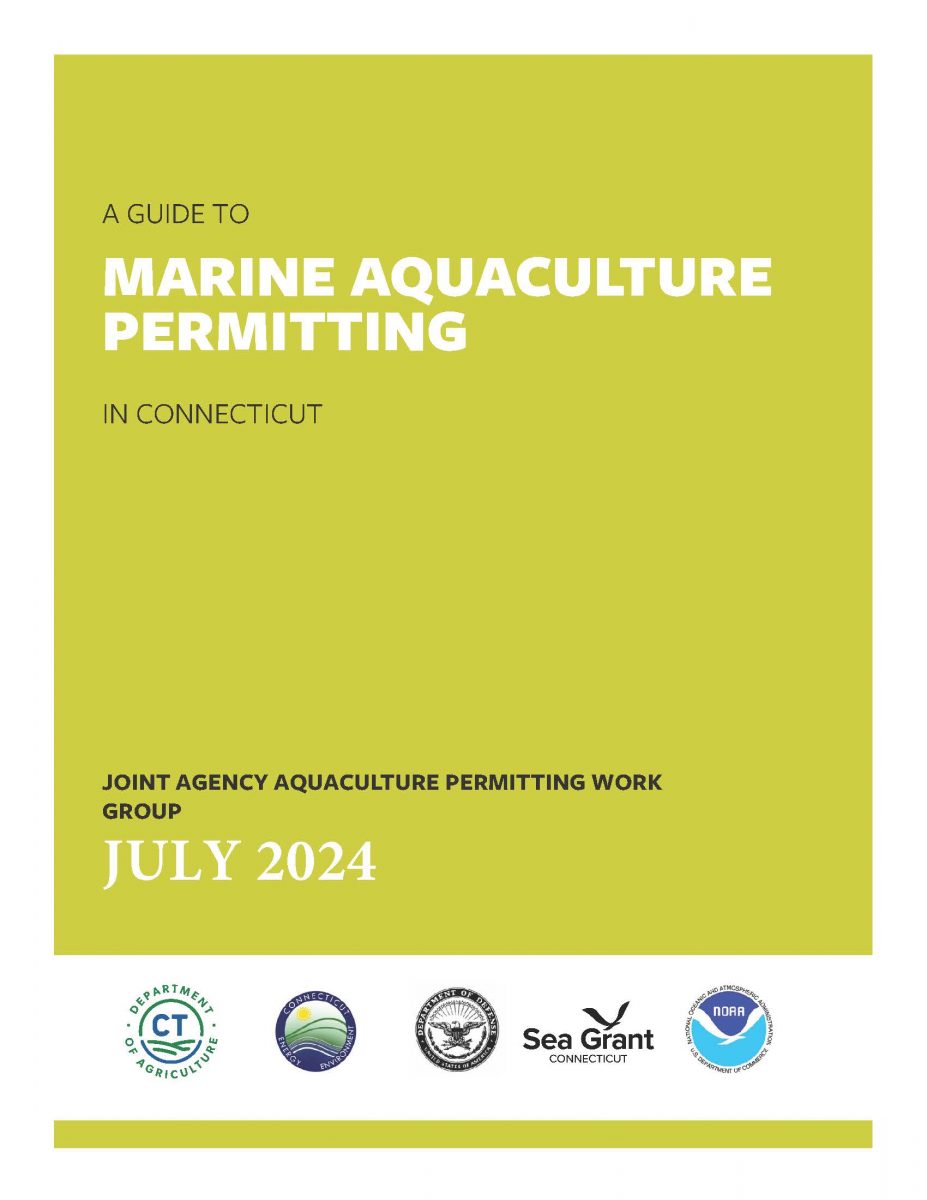
A Guide to Marine Aquaculture Permitting in Connecticut
“A Guide to Marine Aquaculture Permitting in Connecticut,” a handbook about the regulatory process of commercial shellfish and seaweed aquaculture, is now available for viewing and download.
[Read More]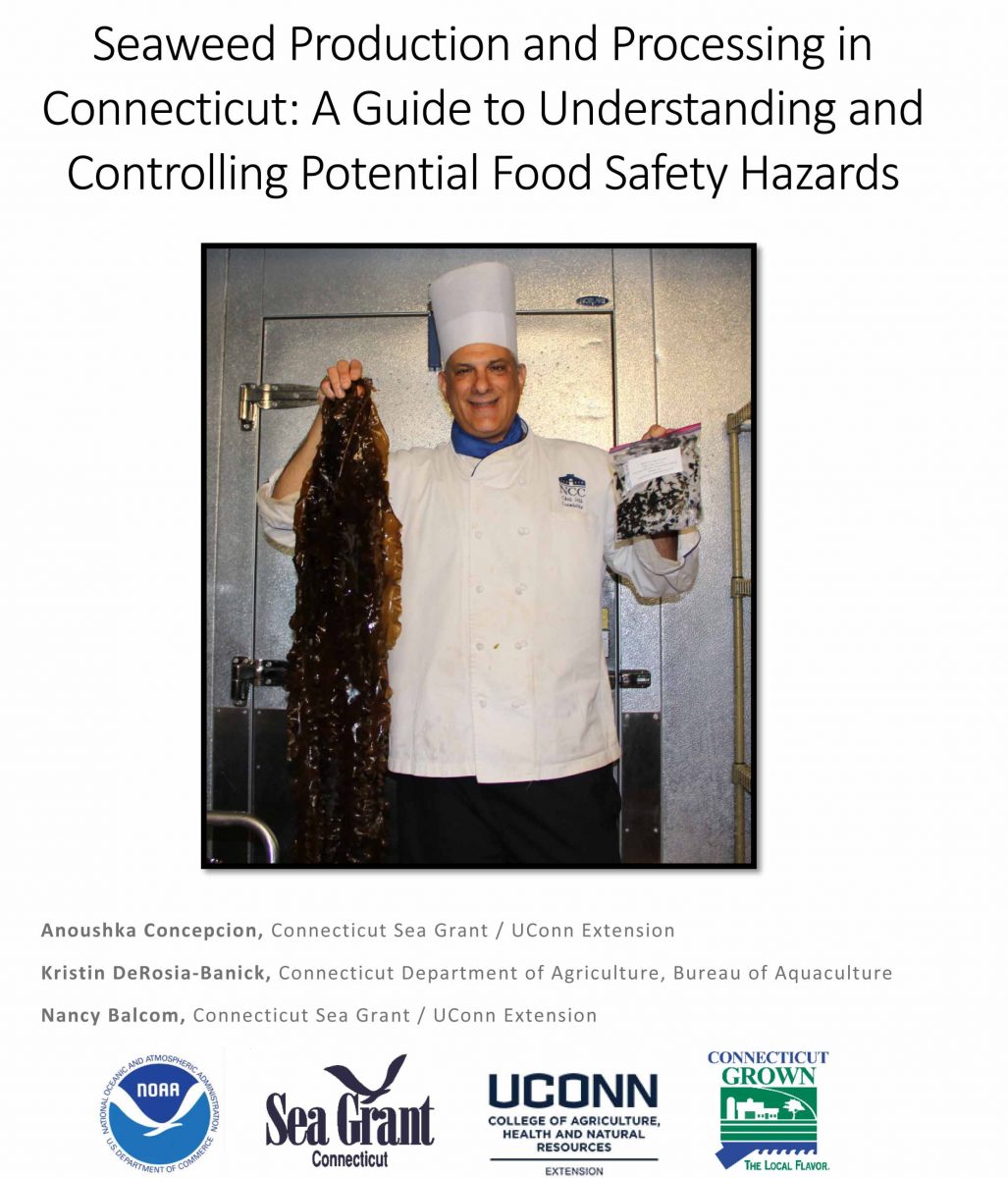
Seaweed Production and Processing in Connecticut: A Guide to Understanding and Controlling Potential Food Safety Hazards
The first food safety guide for the production and processing of kelp and Gracilaria, another type of edible native seaweed, is available for download.
[Read More]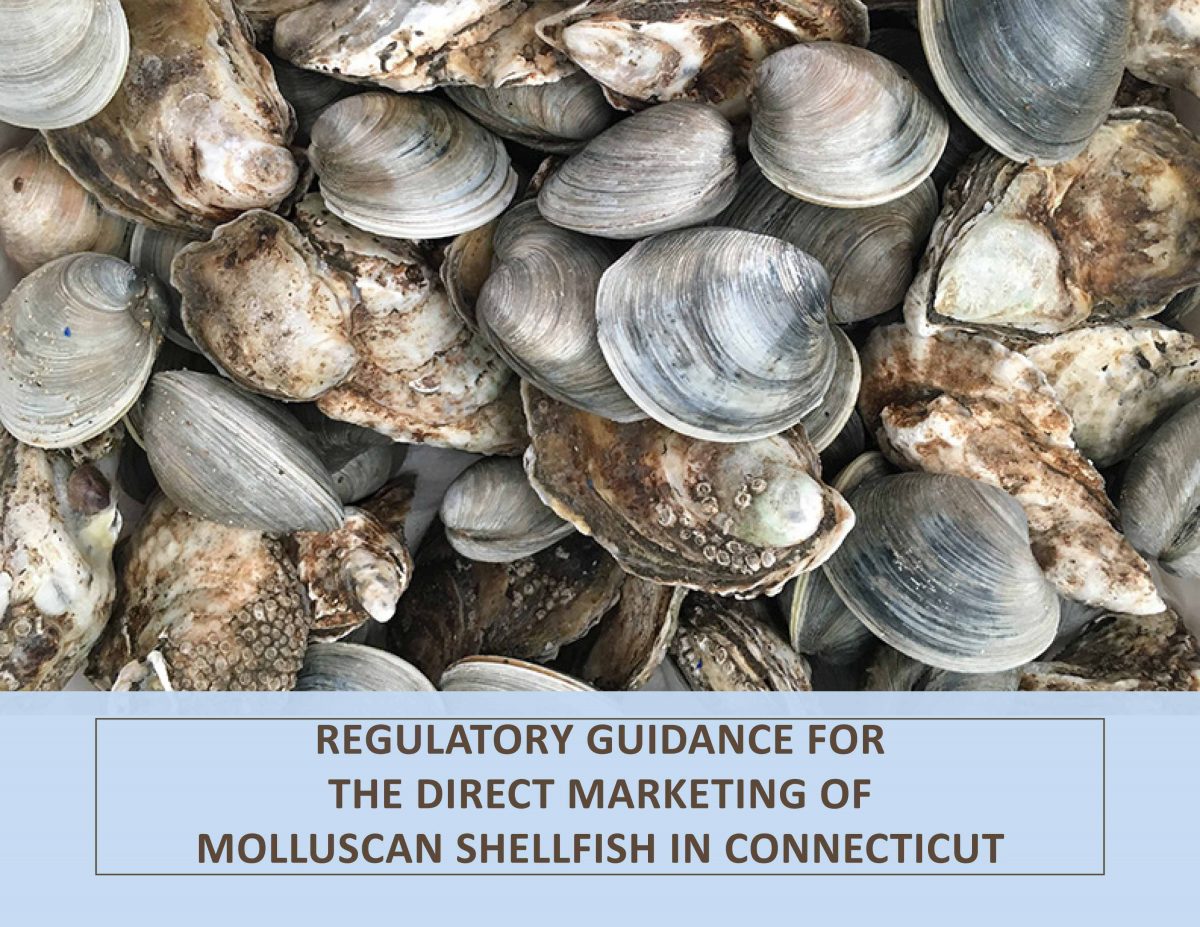
Regulatory Guidance for the Direct Marketing of Molluscan Shellfish in Connecticut
This 13-page guide provides a general overview of the regulations that must be followed to establish and operate a business selling molluscan shellfish to the final consumer in Connecticut. The pdf is available for free download.
[Read More]Harmful Algae: A Compendium Desk Reference (executive summary)
This 16-page booklet provides a summary of the key issues and state of the science pertaining to harmful algal blooms as presented in “Harmful Algal Blooms: A Compendium Desk Reference,” to improve management and response.
[Read More]New England Seaweed Culture Handbook: Nursery Systems
This 92-page illustrated handbook shows how to culture 4 ecologically and economically important seaweeds native to New England. They are kelp, nori, Gracilaria and Chondrus.
[Read More]Safe Handling, Storage,and Cooking Practices for Consumers of Molluscan Shellfish
This brochure contains instructions to help consumers keep seafood fresh and safe to eat after purchase. Brochure can be downloaded here. This brochure may be printed and distributed.
[Read More]Enjoying Shellfish Means Keeping Them Cool
A printable brochure about Vibrio bacteria and how to reduce your risk by handling seafood properly and keeping it chilled.
[Read More]Shellfish Aquaculture and the Environment: an Executive Summary
Sandra L. Shumway, ed. 2011. A summary of key issues and state of the science with respect to shellfish aquaculture and the environment, as presented in Shellfish Aquaculture and the Environment. Wiley-Blackwell. Free. Download here.
[Read More]Guidelines for Utilizing Aquatic Organisms for Scientific/Educational Purposes in Connecticut
D. Carey, S. Kelly, T. S. Getchis This document outlines the State of Connecticut’s requirements for scientists, students and educators working with molluscan shellfish, finfish, crustaceans, and other marine animals. Free. Download PDF
[Read More]Genetic Approaches for the Culture and Restoration of Bay Scallops
S. Stiles, J. Choromanski, and D. Jeffress This manual addresses techniques and technology for developing genetic lines and genetic strategies to improve culture, stock enhancement, and restoration of the bay scallop. Illustrated, coil-bound. 80 pp. CTSG-08-16. ISBN 1-878301-11. Price: $10.00 includes postage and handling within the USA. Orders outside the USA require additional postage. To […]
[Read More]Seed Oystering
T. Getchis, L. Williams, and A. May An 8-page introduction to seed oystering, written for Connecticut citizens, including history, ecology, equipment and techniques and information on regulations. Illustration of the oyster life cycle. Revised for 2007 Download PDF
[Read More]Shellfish Aquaculture Industry Assessment
T. S. Getchis This 12-page illustrated bulletin is a summary of the needs of the shellfish industry in Connecticut, USA. Free. Send for print copy or Download PDF
[Read More]Marketing Management in Aquaculture
R. Pomeroy This two-page (double-sided) fact sheet will help the aquaculturist develop a marketing plan at the outset of the enterprise. Free. Download PDF
[Read More]Decision-Making Factors for Investment in Aquaculture
R. Pomeroy This practical two-page (double-sided) fact sheet contains checklists to help the aquaculture professional evaluate an aquaculture business plan, including management, financial, physical, production, and marketing factors. The evaluation will help in business decision-making. Free. Download PDF
[Read More]Financial Management: A Fact Sheet for Connecticut Fishermen
R. Pomeroy This two-page (double-sided) fact sheet can serve as a primer for those seeking access to financial resources for aquaculture, as well as those seeking to sharpen skills in financial management. Free. Download PDF
[Read More]Developing an Aquaculture Business Plan
R. Pomeroy A good aquaculture business proposal or plan will result in fewer mistakes in the business and exposes thoughts, assumptions, and research findings to reason. A business plan is also needed to secure financing. This 1-page fact sheet will help you develop your plan. Free. Download PDF
[Read More]Financing the Aquaculture Operation
R. Pomeroy and T. Getchis Obtaining capital for an aquaculture business can be a formidable task. This one-page fact sheet provides useful tips and resources. Free. Write for paper copy or Download PDF
[Read More]Aquaculture Record Keeping
R. Pomeroy This two-page (double-sided) fact sheet can help the aquaculturist keep accurate, detailed and complete records, to make the business most efficient. Such records can help in obtaining financing, doing taxes, and qualifying for government programs. Free. Download PDF
[Read More]Manual for the Hatchery Culture of Bay Scallops
J.C. Widman, J. Choromanski, R.A. Robohm, S. Stiles, G.H. Wickfors and A. Calabrese This manual, a collaboration between scientists at the National Marine Fisheries Lab in Milford, CT and Connecticut Sea Grant, describes step by step techniques for hatchery culture of bay scallops. 50 pp. Publication Number CTSG-01-03 with Postage $10.00. To request a copy, […]
[Read More]